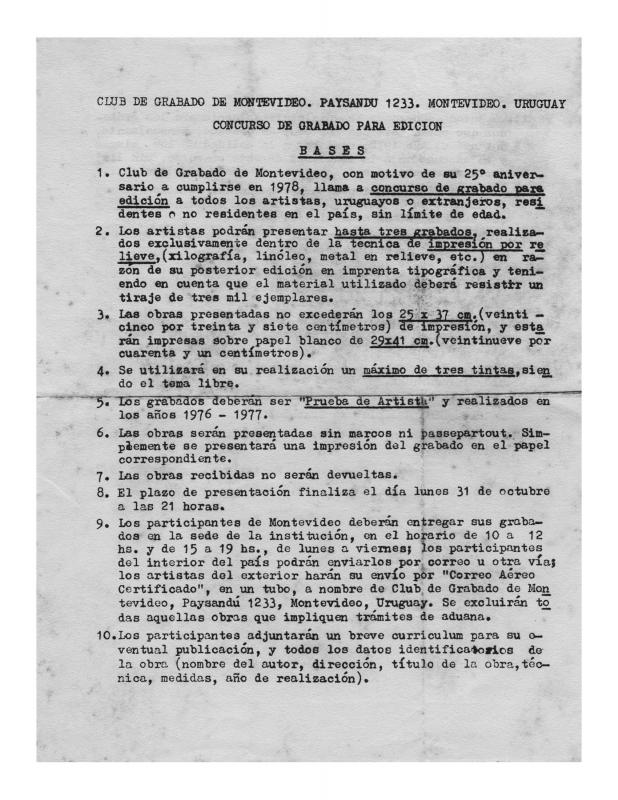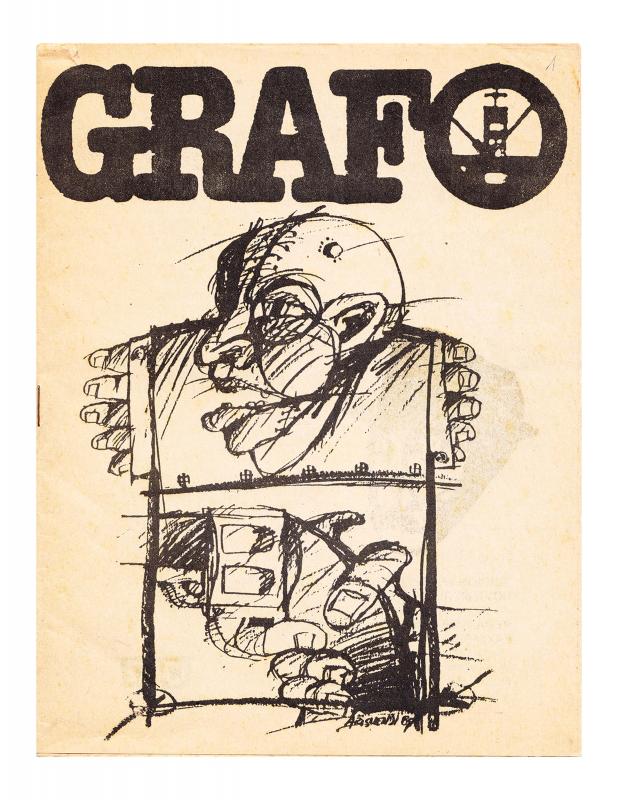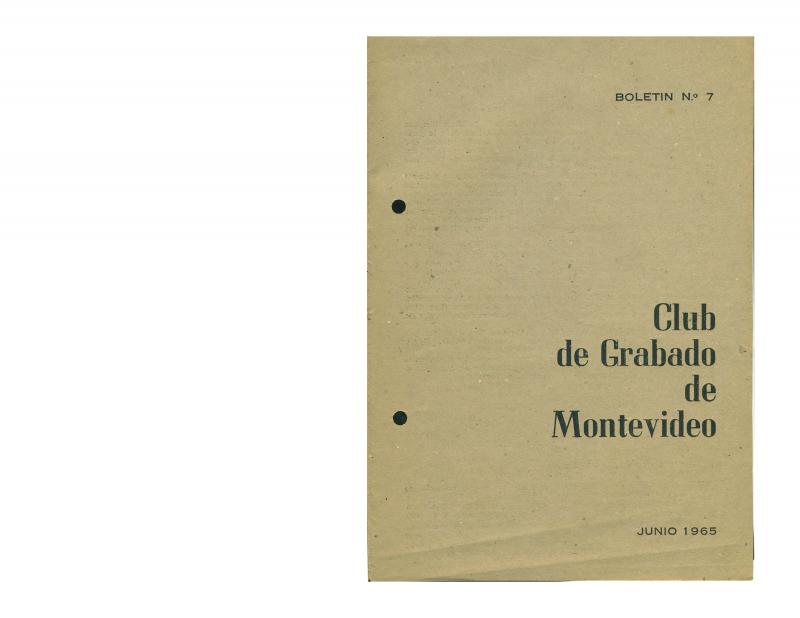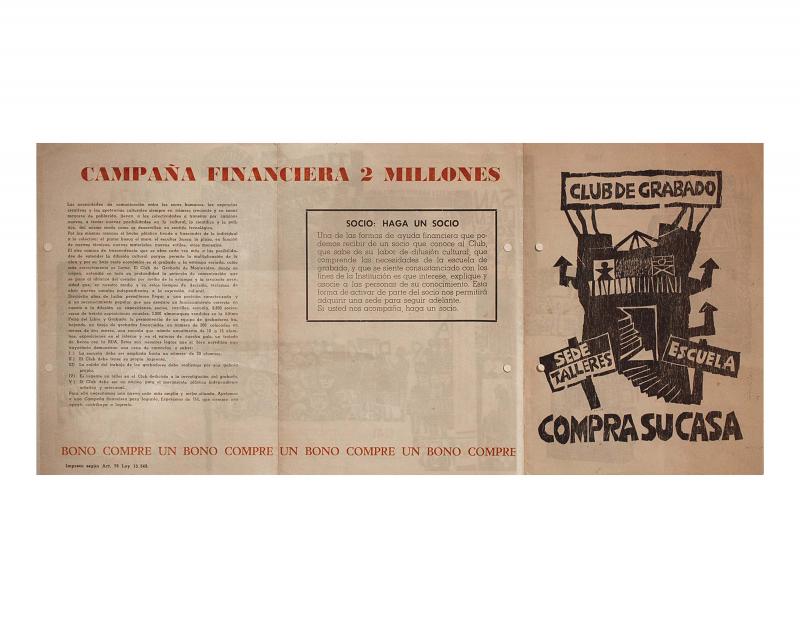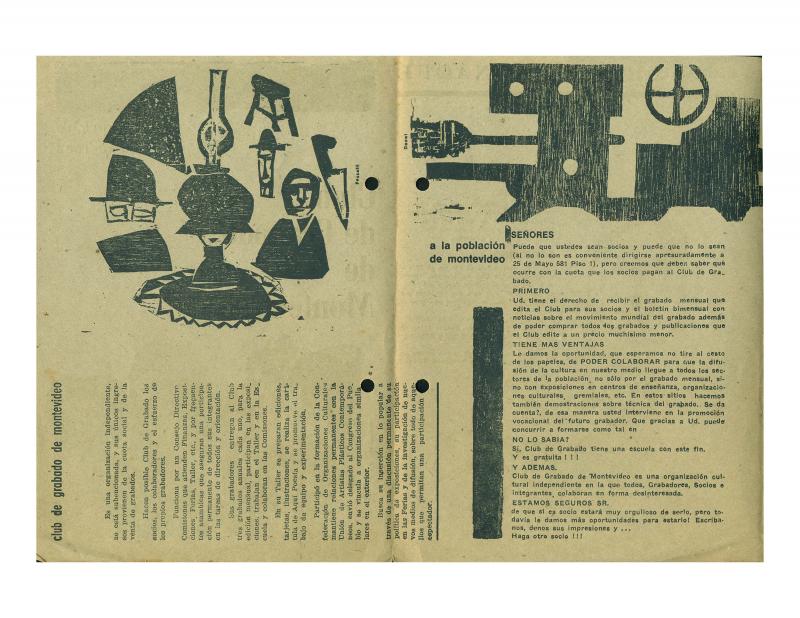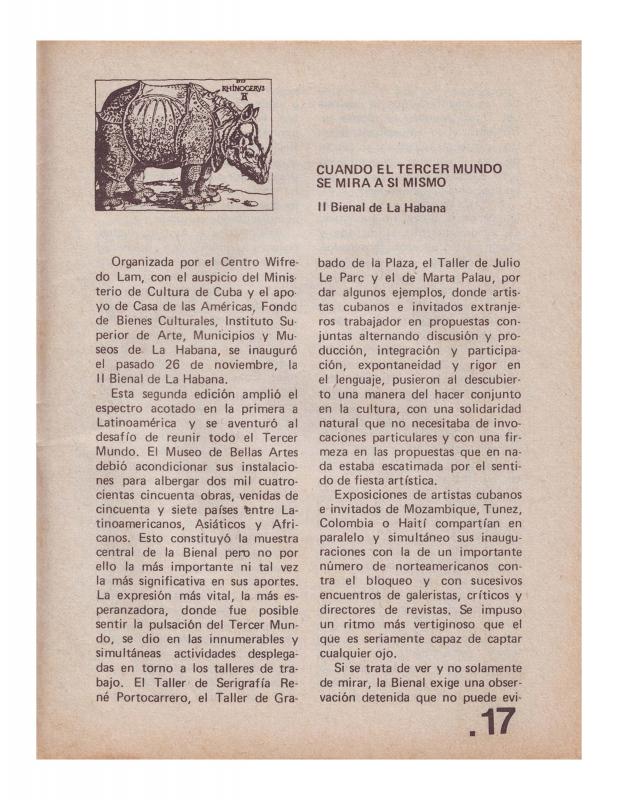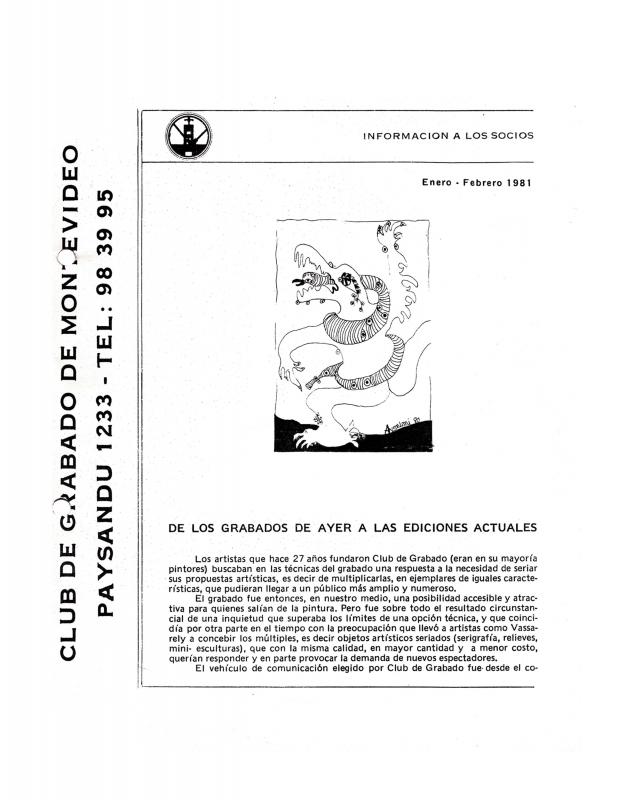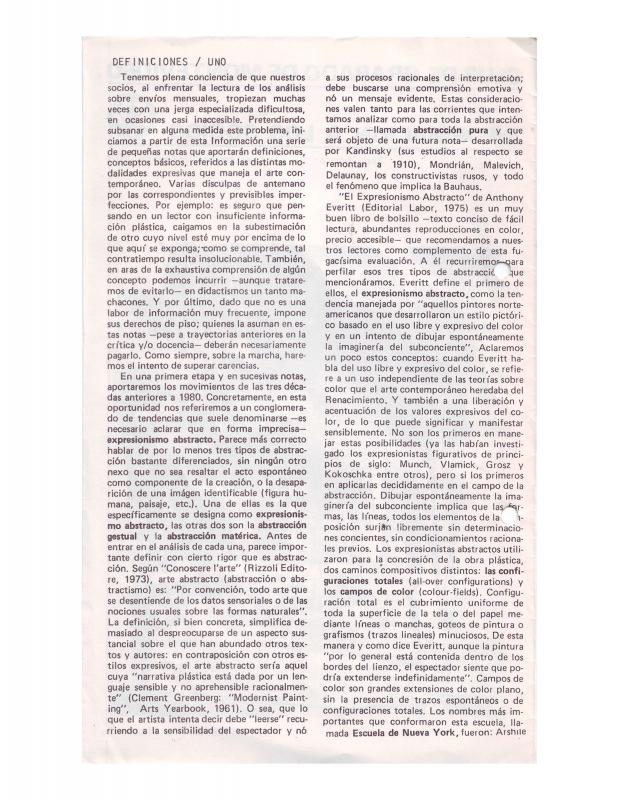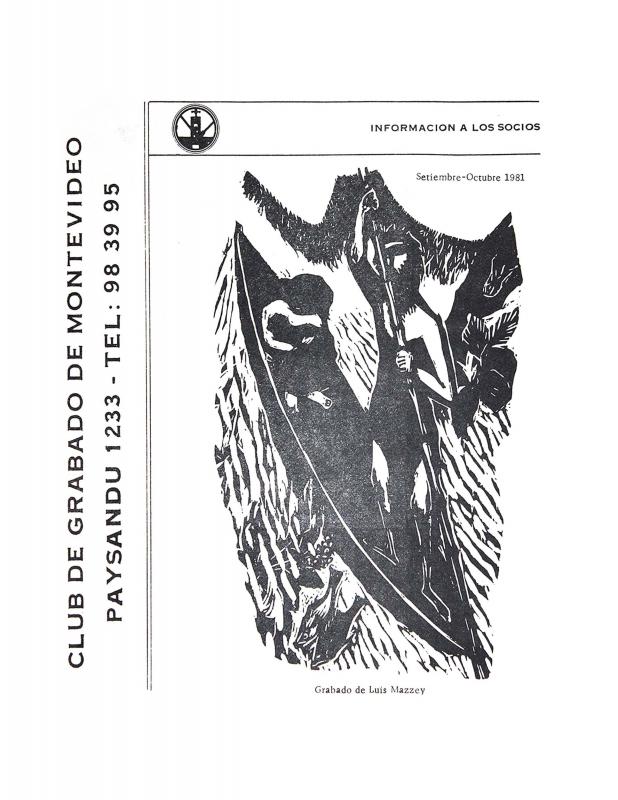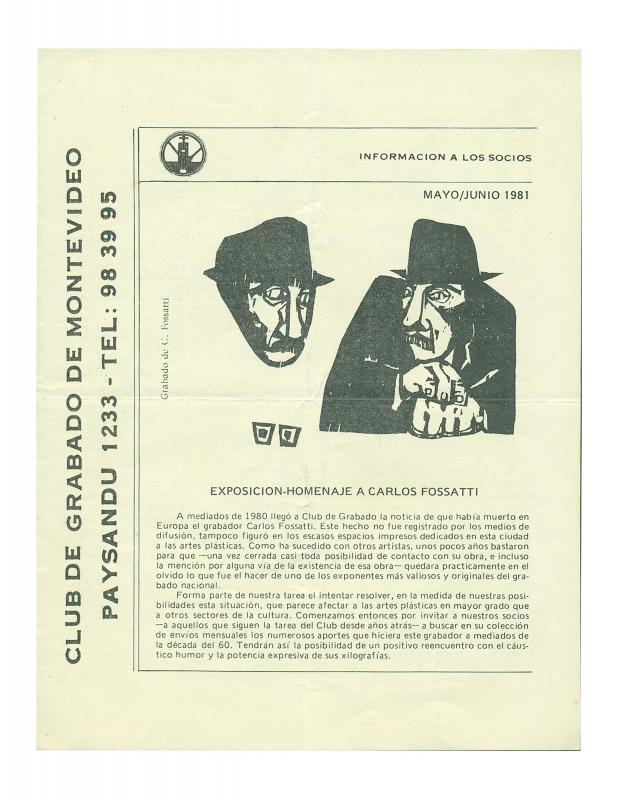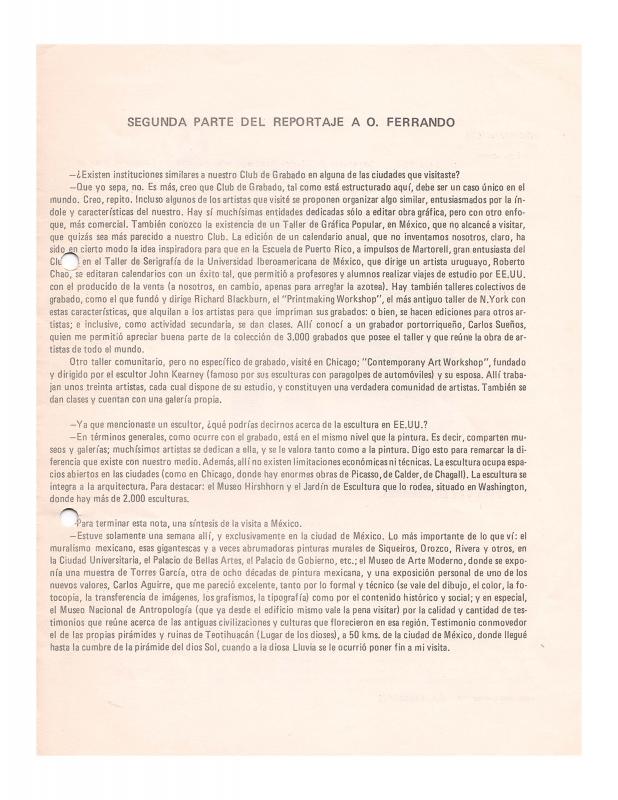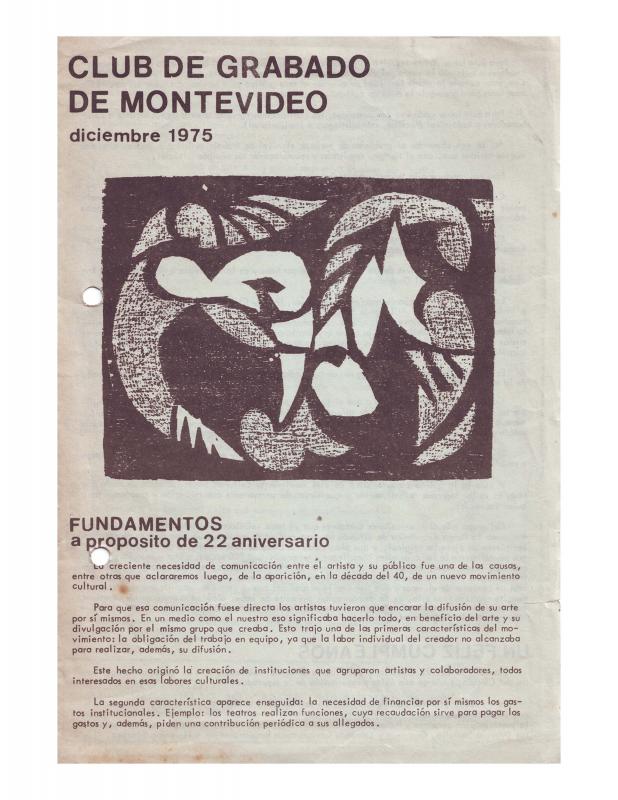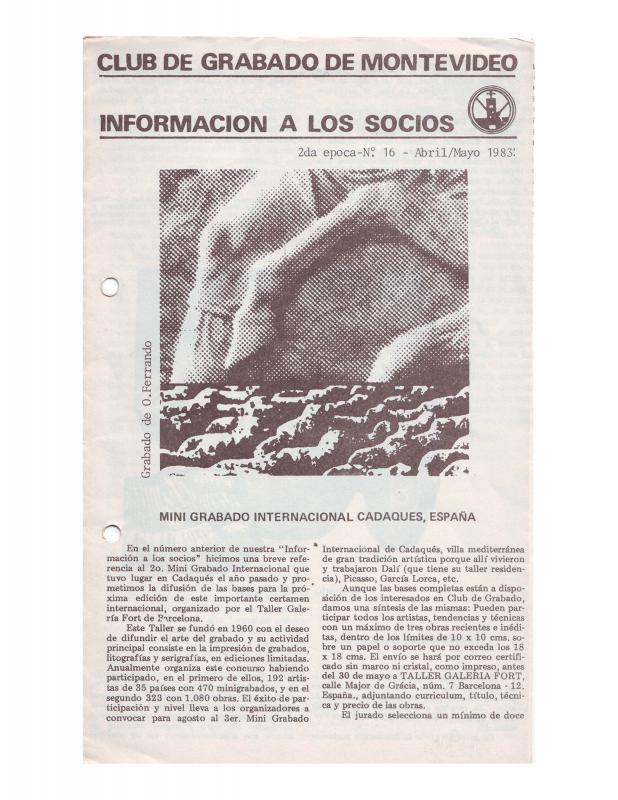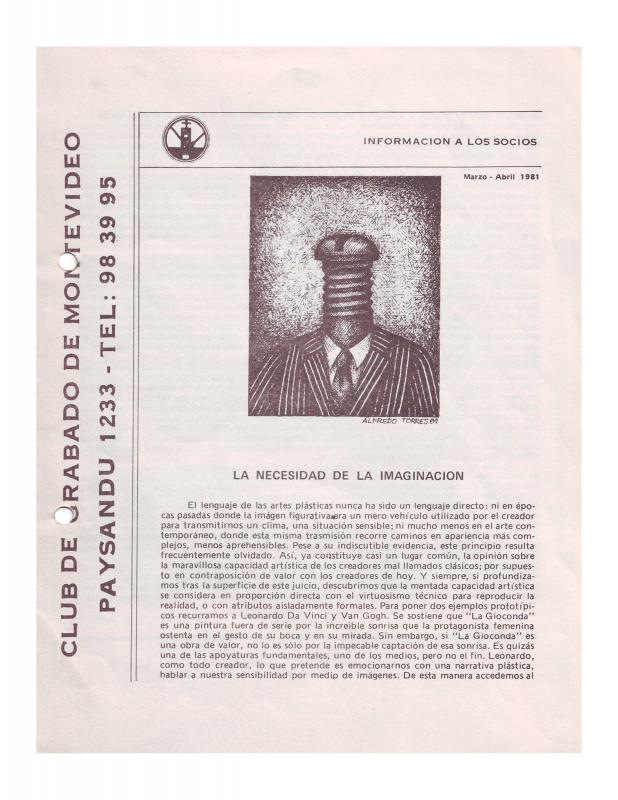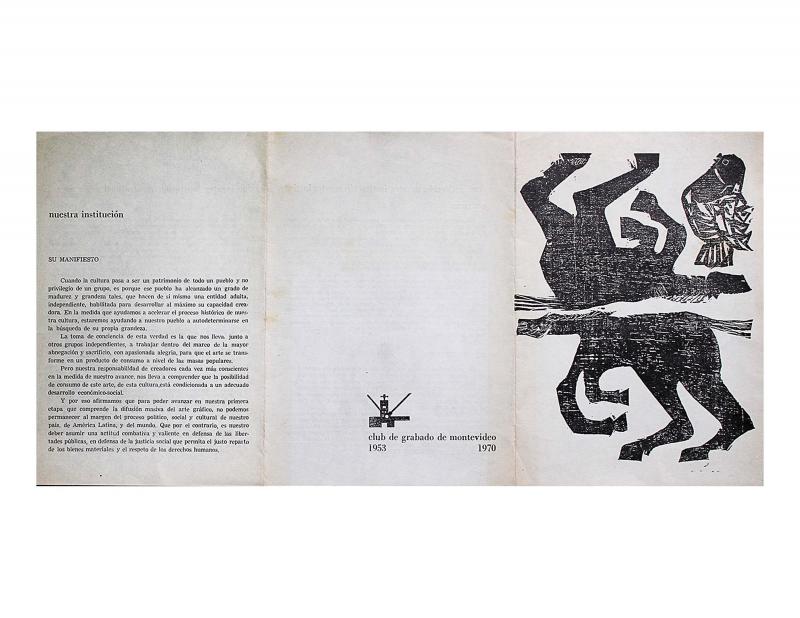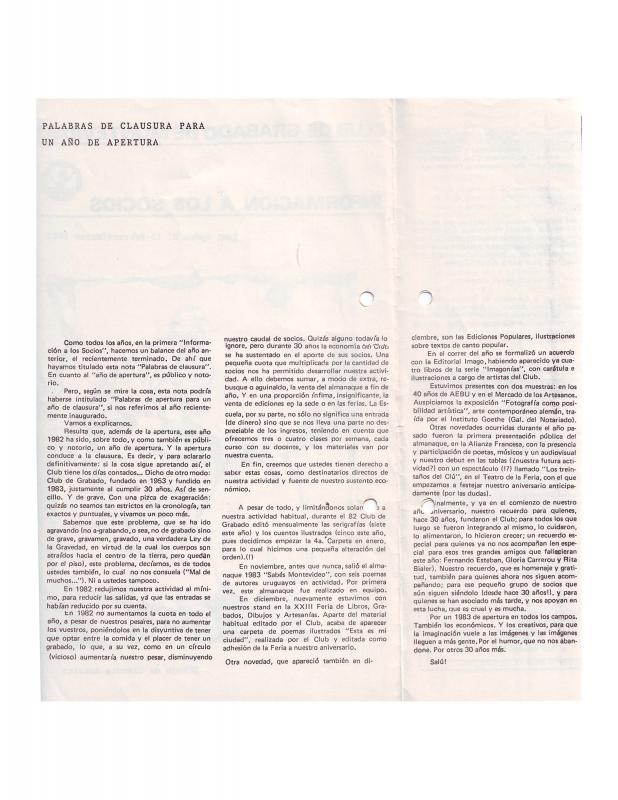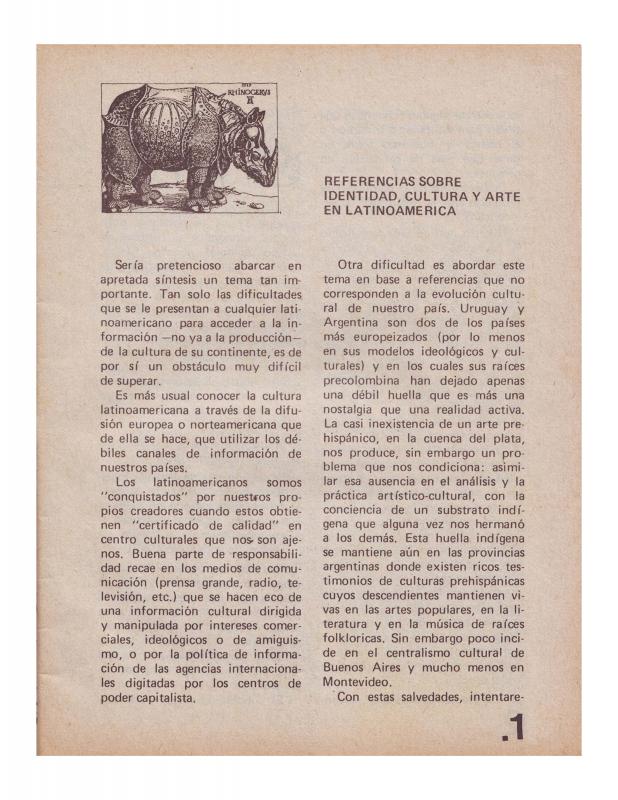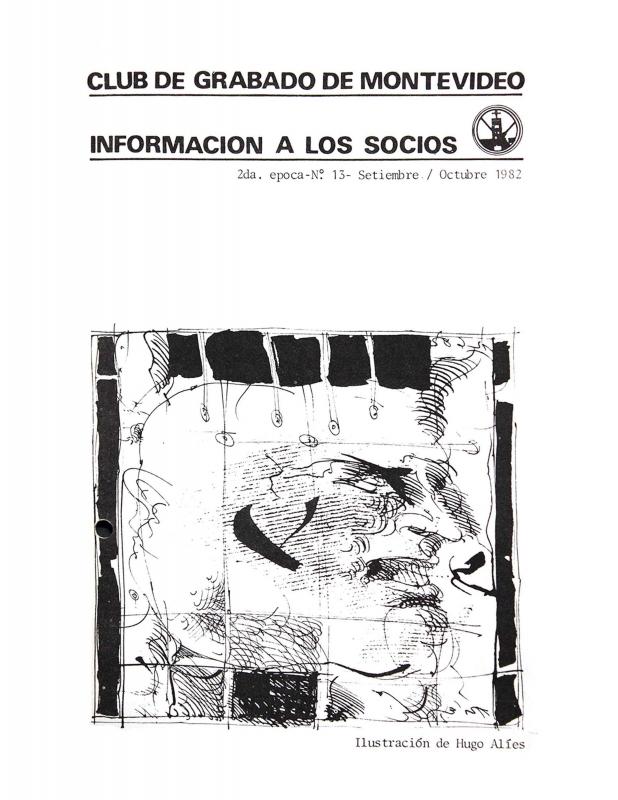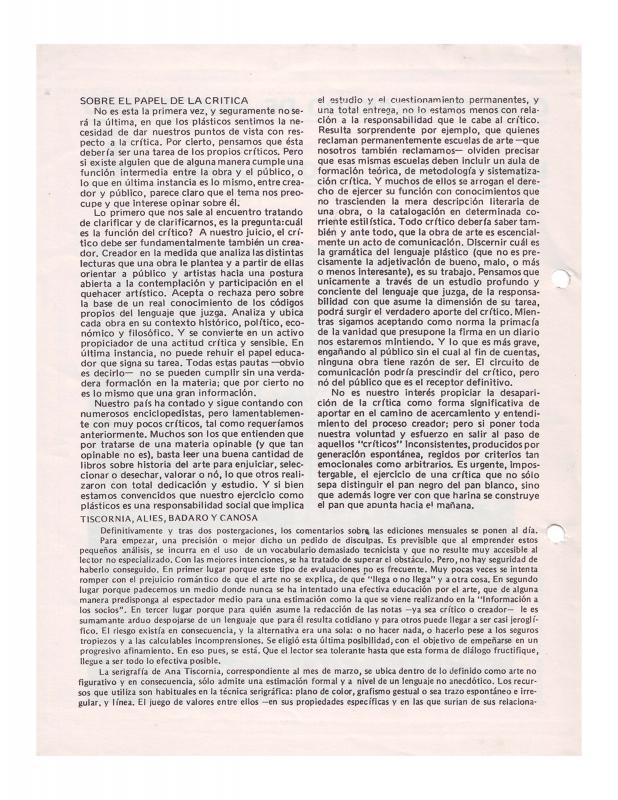In October 1965, the CGM (Club de Grabado de Montevideo) published its Boletín n° 9, which announced the trend for using abstract art in wood engraving. It was represented with a work in that genre by the artist Adela Caballero. Extracts by Søren Kierkegård (1813−1855) and his existentialist philosophy are quoted. Kierkegård asserted the following: “this work that we have published, moves from the nonfigurative, is composed with abstract forms, and transmits suggestively a new reality of sensible imagination, emphasizing the sensitive structure of its visual artistic composition.” Similarly, the organization included contributions about scientific advancements made by the engraver and Uruguayan artist Luis Mazzey (1895−1983). To be able to interpret the movement, Mazzey recommends a certain amount of knowledge about the development of art history, emphasizing the study of new artistic trends in the twentieth century. All of which, he believed, started with Impressionism, the initiator of avant-garde movements. It is of interest to note that the controversy about abstraction and figuration had already taken place in Uruguay during the fifties and the beginning of the sixties. So, these qualms that were presented to its members by CGM in 1965 were commentaries that were historically late; they are, however, valid for the type of public to which the engravings are destined. Focusing on abstract engraving and its innovation, the Boletín n° 9 continued with a report on the Biennial of Ljubljana (Slovenia) where Joan Miró received the honorary award and where there was Uruguayan participation in engraving by the following artists Miguel Bresciano (1937−1976), Luis Cammitzer (b. 1937), Raúl Catelani, Carlos Fossatti (1928−1980), José Gamarra (b. 1934), and Ruisdael Suárez. It also reported that the Uruguayan engravers that were given awards at the twenty-ninth Salón Nacional de Artes Plásticas was the first time the “Shell del Uruguay” prize had been awarded. For further reading, please refer to the ICAA digital archive and the following texts published by the Club de Grabado de Montevideo: “Concurso de grabado para edición” (doc. no. 863481), “13 años de actividad de Club de Grabado de Montevideo” (doc. no. 1183571), “El arte correo en el Uruguay” (doc. no. 1191850), “Boletín N°7 Club de Grabado de Montevideo” (doc. no. 1182833), “Club de Grabado compra su casa” (doc. no. 1192649), “Club de Grabado de Montevideo 22 Aniversario 1953-Agosto 1975” (doc. no. 1183514), “Club de Grabado de Montevideo a la población de Montevideo” (doc. no. 1183124), “Cuando el Tercer Mundo se mira a sí mismo. II Bienal de La Habana” (doc. no. 1184459), “De los grabados de ayer a las ediciones actuales” (doc. no. 1191787), “Definiciones/Uno” (doc. no. 1189065), “Entrevista a Luis Mazzey” (doc. no. 1186991), “Entrevista a Óscar Ferrando” (doc. no. 1186747), “Entrevista a Óscar Ferrando [segunda parte]” (doc. no. 1186802), “Fundamentos a propósito de su 22 aniversario” (doc. no. 1182640), “Mini grabado Internacional de Cadaqués. España” (doc. no. 1191135), “La necesidad de la imaginación” (doc. no. 1190793), “Nuestra institución” (doc. no. 1182010), “Opiniones (I)” (doc. no. 1185411), “Palabras de clausura para un año de apertura” (doc. no. 1191167), “Referencias sobre identidad, cultura y arte en Latinoamérica” (doc. no. 1183641), “Reflexiones en torno a la supuesta crisis de las artes plásticas” (doc. no. 1185539), and “Sobre el papel de la crítica” (doc. no. 1187071)].

